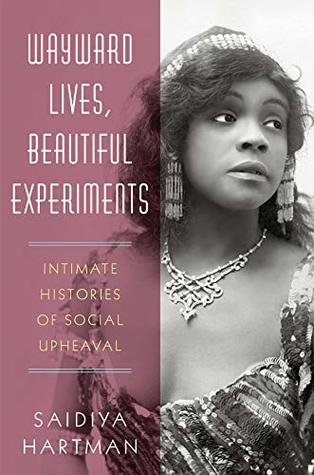More on this book
Community
Kindle Notes & Highlights
Read between
January 24 - February 11, 2021
The photographs coerced the black poor into visibility as a condition of policing and charity, making those bound to appear suffer the burden of representation.
By 1914, “the majority of prostitution charges were executed through the vagrancy clause of the Tenement House Law.” Thirty-six percent of these convictions were of black women. They were the largest single group prosecuted under this rubric. In the guise of housing reform, the police were given great latitude in the surveillance and arrest of black women and tenement residents. The bulk of the arrests were justified less for what had been done than on the suspicion of who these young women might become.
Even a century later, reading through the materials assembled in the case file and poring over her letters, I am prohibited from calling her name, less to protect her than to guarantee her disappearance.
The young Henry Miller was enamored of Harrison and marveled at his skills as a street-corner orator. The consensus was that Harrison, the Black Socrates, was the most brilliant orator in New York. It is uncertain whether Miller was privy to the rumors about his personal life, but perhaps he suspected as much, perceiving the intensity of passion and the spirit of erotic adventure in the force of Harrison’s political rhetoric. Miller took such lessons to heart in Tropic of Cancer and acknowledged the debt in Plexus, insisting that sexual freedom was as necessary as economic freedom and that the
...more
In the Red Summer of 1919, nothing appeared more improbable and untimely than colored girls, not yet broken by want and deprivation, dreaming of what might be possible. Despite the forty race riots that eradicated the last shreds of postwar optimism, and white folks on a killing rampage from Chicago to Texas, and black folks meeting them with violence, battling them for their lives and determined to prove, if only to one another, that freedom wasn’t a mockery, and the death tables and the graphic pictures of lynched bodies published each month in The Crisis: A Record of the Darker Races, and
...more
Harlem was surely as queer as it was black.
Chandler Owen published his essay “The Cabaret as a Useful Social Institution” in the August 1922 issue of The Messenger, the most radical of black periodicals
One girl can stand in for any of them, can serve as the placeholder for the story, recount the history from the beginning, convey the knowledge of freedom disguised as jargon and nonsense.
women, bent over tubs, scrubbing and washing for the whole city, or sleeping in the room off the kitchen so they can raise the children and tend to the husbands and ensure the future increase of the world set against them.


